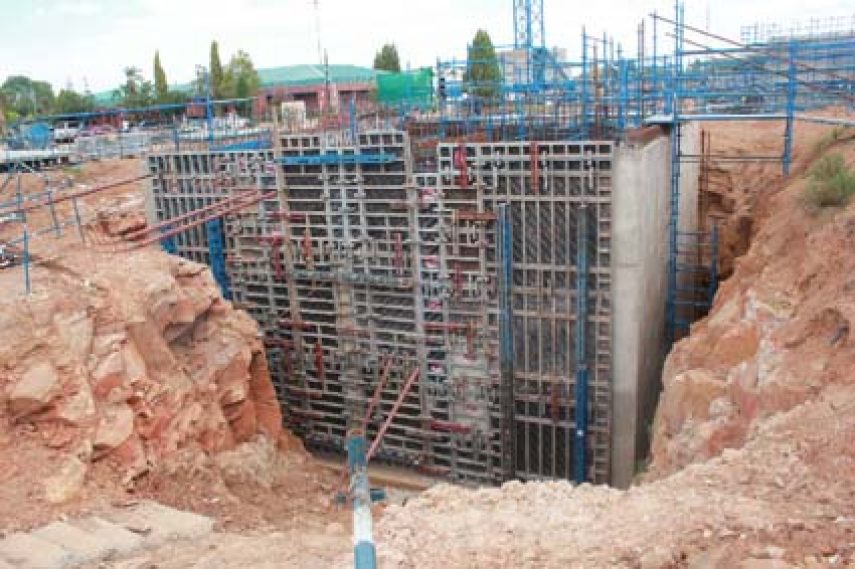AN entire concrete structure can be transformed into an internationally accepted watertight barrier, with the use of the crystalline permeability-reducing admixture Chryso CWA 10, from Chryso Southern Africa.
This is according to the company’s Technical Manager: Concrete, Brenton Brouard, who added that internationally accepted penetration depths are used to describe the degree of watertightness – or impermeability – of concrete.
“The test method described in the European standard EN 12390-8 for testing hardened concrete is arguably the most practical test method available in South Africa,” he said.
The standard stipulates the depth of penetration of water under pressure, to evaluate the watertightness of concrete to liquid. A 50 mm penetration depth is classified as being “impermeable with respect to potable water” and a 30 mm depth as being impermeable with respect to water containing aggressive substances. In some parts of the world, the 30 mm depth applied to water containing aggressive substances is lowered to 20 mm.
Brouard said this test had been frequently used in South Africa to evaluate the effectiveness of crystalline permeability-reducing admixtures. He said it should be noted that these products do not waterproof concrete, but rather reduce the concrete’s level of permeability to the internationally accepted levels; and that some penetration of the liquid under pressure is possible.
On the other hand, waterproofing of concrete eliminates any penetration of water into the concrete. This is done using various 100% waterproof membranes, which are applied in the form of surface coatings of various thicknesses.
“Whether it is positive or negative permeability that needs to be reduced, this versatile admixture is ideal for concrete exposed to harsh conditions. By reducing the permeability of concrete, Chryso CWA 10 protects it against chemicals, chlorides, sea water and corrosive ground water.”
The permeability of a concrete is directly linked to the continuity of its capillary network. The greater the levels of watertightness effected in concrete using Chryso CWA 10, the greater the level of discontinuity induced in the capillary network.
This is because its active ingredients react in the presence of moisture, forming a dendritic crystalline structure throughout the entire concrete’s pore – or capillary – network. This means less chance of carbonation, alkali-aggregate reaction or corrosion of the concrete and its reinforcing steel. Being protected in this way from waterborne soluble salts, enhances the durability of the concrete and the structure itself.
“Given the right conditions, Chryso CWA 10 can even seal hairline cracks up to 0,4 mm wide in the concrete. This is because its active ingredients react in the presence of moisture.”
Brouard added that, in the absence of moisture, Chryso CWA 10 will lie dormant. However, it will reactivate as soon as it encounters moisture. As long as moisture is present, crystals continue to grow within the concrete.
The dendritic crystalline formations take place within the existing crystalline structure of the concrete, so it is an integral system with no risk of debonding. The reduced permeability – as well as the corresponding improvement in chemical resistant properties – will remain even if the concrete surface has been damaged.
Brouard said watertight concrete – also called impermeable concrete – is vital for any structure that retains liquid under pressure. He emphasises that: “The value of Chryso CWA 10 is that it can reduce the ingress of liquid under pressure, to internationally accepted levels. The concrete becomes a watertight barrier, with lasting integral permeability-reducing properties.”
The admixture is non-toxic and can be added to concrete at the time of batching, so there are no climatic restraints. This makes it process-friendly, allowing flexibility in construction scheduling.
“When used as recommended, Chryso CWA 10 is compatible with all Portland cements and their commonly associated SCMs, as well as most Chryso admixtures and ABE. Products. In addition, it does not adversely affect the slump, strength, air entrainment or workability of the concrete.”

